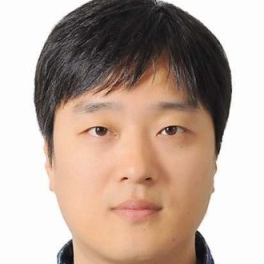Information Theory and 5G/6G Mobile Communications
A special issue of Entropy (ISSN 1099-4300). This special issue belongs to the section "Information Theory, Probability and Statistics".
Deadline for manuscript submissions: closed (20 December 2021) | Viewed by 20464

Special Issue Editors
Interests: network capacity; network optimization; stochastic QoS guarantee; machine learning; information theory
Special Issues, Collections and Topics in MDPI journals
Special Issue Information
Dear colleagues,
Information theory has been the theoretical background of modern communication technologies. At each critical stage of mobile communication evolution, information theory has provided innovative directions for future breakthroughs. The aim of this Special Issue is to encourage researchers to present original and recent developments on information theory to analyze what lies beyond 5G. The present Special Issue focuses on the fundamental theory, performance limits, design, and management issues in the context of 5G/6G communication systems. For this purpose, submissions of comprehensive overviews and surveys for future networks, as well as original papers related to these techniques, are proposed. Topics of interest include, but are not limited to the following areas:
- Information theory applied to 5G/6G communication systems;
- Capacity bounds, code designs, applications;
- AI and machine learning technology applied to 5G and 6G wireless communications to tackle optimized physical layer design, complicated decision making, network management, and resource optimization;
- New interference and resource controls for 5G/6G communication systems;
- New system architectures stemming from the combination of computing, communication, and storage;
- Integration of wireless information and energy transfer;
- Big data technology for 5G/6G wireless networks;
- Novel waveform design and multiple access methods;
- Cell-free massive MIMO for 5G/6G communication systems;
- Holographic beamforming;
- Quantum communications, networks, and architecture;
- Integration of access backhaul networks;
- Breakthrough technologies and concepts.
We hope this Special Issue will function as a roadmap for information theory and 5G/6G communication systems.
Prof. Wonjong Noh
Prof. Sung Hoon Lim
Guest Editors
Manuscript Submission Information
Manuscripts should be submitted online at www.mdpi.com by registering and logging in to this website. Once you are registered, click here to go to the submission form. Manuscripts can be submitted until the deadline. All submissions that pass pre-check are peer-reviewed. Accepted papers will be published continuously in the journal (as soon as accepted) and will be listed together on the special issue website. Research articles, review articles as well as short communications are invited. For planned papers, a title and short abstract (about 100 words) can be sent to the Editorial Office for announcement on this website.
Submitted manuscripts should not have been published previously, nor be under consideration for publication elsewhere (except conference proceedings papers). All manuscripts are thoroughly refereed through a single-blind peer-review process. A guide for authors and other relevant information for submission of manuscripts is available on the Instructions for Authors page. Entropy is an international peer-reviewed open access monthly journal published by MDPI.
Please visit the Instructions for Authors page before submitting a manuscript. The Article Processing Charge (APC) for publication in this open access journal is 2600 CHF (Swiss Francs). Submitted papers should be well formatted and use good English. Authors may use MDPI's English editing service prior to publication or during author revisions.
Keywords
- information theory
- fundamental limits of next-generation communication
- machine learning- and artificial intelligence-based designs
- antenna and beamforming designs
- quantum information theory
- quantum networks and architectures
- cell-free communication
- mmWave and THz communications
- wirelessly powered communications
- novel waveform design
- channel and source code design
- network architectures for 5G and beyond mobile systems







